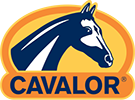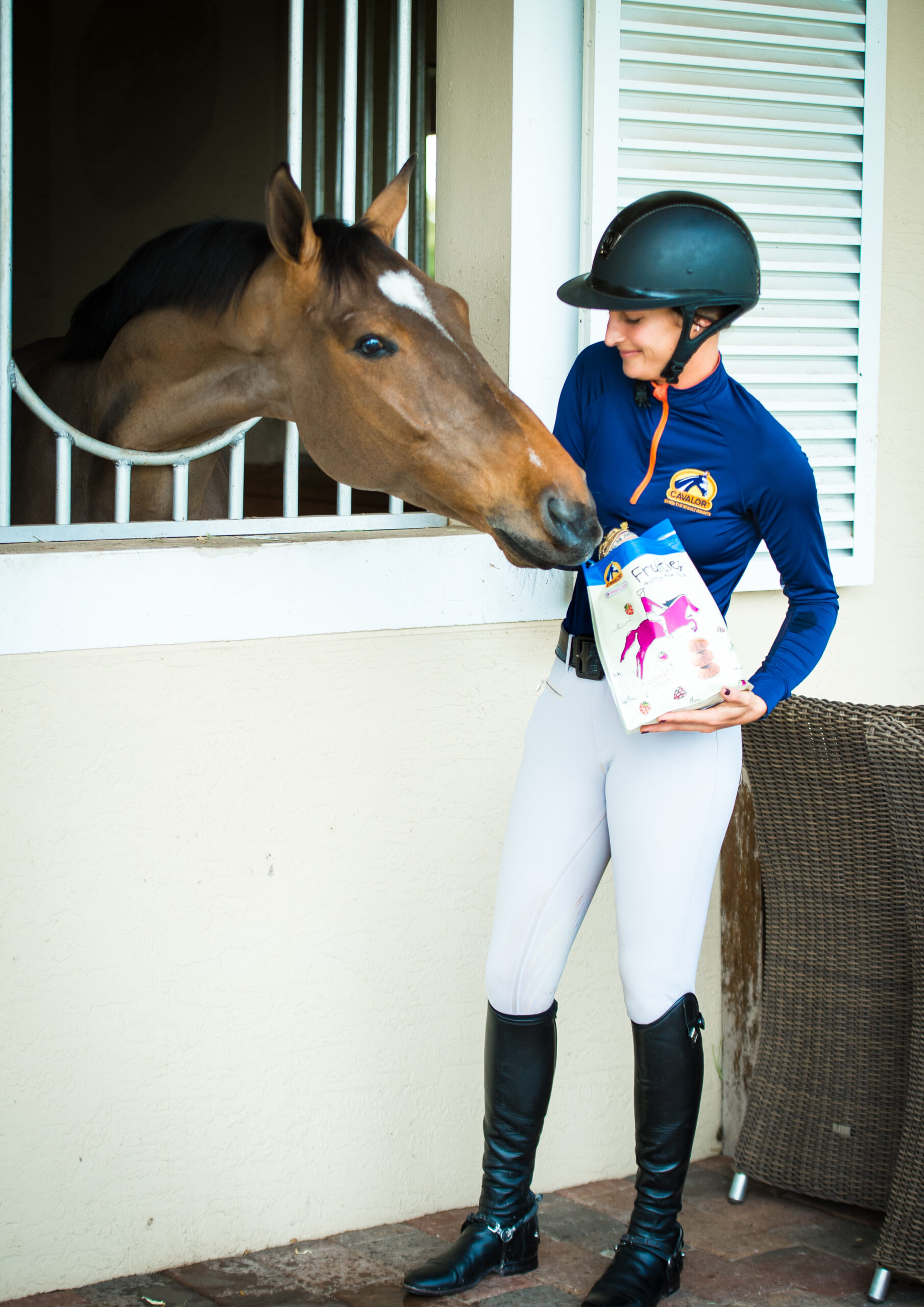A horse at peak condition and performance is the ultimate aim of race horse trainers, but how do we achieve this? Visible condition is a good indicator of overall health, but we know that good condition and health starts internally.
We often judge a horse by its appearance in The Parade Ring on how it might perform, however, we all know that it takes much more than shampoo and show spray to achieve winning results . A healthy horse efficiently utilizes energy and absorbs nutrients from its feed, allowing it to feel strong and relaxed in its environment. The condition of a horse’s coat reflects its overall health, and this all starts from the inside.
Mental and physical health are inextricably linked
A horse’s physical health is determined by an ingenious system – the immune system. The gastrointestinal tract is an important link in this system. A healthy digestive system is the first step towards a healthy horse. Horses don’t just rely on their physical state of health to help combat pathogens; mental health is also a contributing factor in disease resistance. Stress, for example, impacts immensely on equine health, so taking into consideration how the demands of racing and training impact the mental wellbeing of the horse is of paramount importance. Minimise stress and reduce boredom by ensuring your horses have sufficient turnout and social interaction.
The immune system is about mental and physical health
The development of a healthy GI system starts just after birth. As soon as a foal starts to drink colostrum (the first milk a mare gives to her foal) it acquires immunity through antibodies entering the bloodstream, bacteria – both beneficial and harmful – also start to colonise the large intestine. Bacteria that are beneficial to intestinal health take up residence in the gut and are called bacterial flora or microflora. There are also strains of bacteria with a negative impact on health. These bacteria are called pathogens and are expelled. Once the beneficial bacteria have colonised the intestines they coexist in harmony with their host. In fact, they are mutually dependent for survival. Horses are trickle-feeders – horses naturally graze and digest fibre 24 hours a day. However, they need the help of the microbial population to help with difficult to digest plant material. These bacteria break down the fibres into volatile fatty acids that supply horses with a large quantity of energy. These fatty acids also have a significant influence on cell health, and consequently on the horse’s general health.
Fatty acids come in various types. Microflora can create certain fatty acids themselves, while the horse has to absorb others via its feed or supplements. Everyone is familiar with the terms omega 3, 6 and 9 fatty acids, but not necessarily aware of why they are important. What is key about these nutrients is not only the quantity but the relationship between them. Horses are naturally accustomed to a diet rich in omega 3. After all, they are grazing animals and grass has a very high content of these fatty acids. Grains, on the other hand, are rich in mega 6 and contain a very low concentration of omega 3 fatty acids. The rations currently fed to horses therefore tend to be rich in omega 6, while in natural conditions the diet would be rich in omega 3. Current feeding habits actually mean there is a disruptive balance between omega 3 and omega 6 fatty acids. This makes it very important to feed your horse products that offer the right balance of omega 3 and omega 6. An extremely easy way of achieving this is to put your horse out to pasture during summer, and add extra omega 3 fatty acids to the diet in winter in the form of supplements or oils, for instance. A word of caution – not all oils are suitable for this purpose. Sunflower oil and maize oil are, for example, high in omega 6 fatty acids, while linseed oil, rapeseed oil and fish oil contain high levels of omega 3 fatty acids.
Horses are naturally accustomed to a diet rich in omega 3
Although less attention is devoted to omega 9 fatty acids, they are still very important. These fatty acids play a role in prostaglandin production and are also crucial to cell functioning among other things. Contrary to the other fatty acids, a horse can manufacture omega 9 fatty acids in the body, so giving this in the form of a supplement is not strictly necessary. The production of omega 9 fatty acids is however influenced by the balance of omega 3 and omega 6 fatty acids in the body.
Supplements can support extra good health
It may be tempting for trainers to introduce a broad spectrum of vitamins and minerals in addition to their normal feed regime in the hope that there is a positive impact. That raises the question: is it really necessary, and do the benefits outweigh the risks?
When a horse is fed a compound feed ration that already contains enough vitamins and minerals, providing extra vitamins and minerals makes little sense. What is important is to keep to the recommended ration stated on the packaging and check that B vitamins have been added to the feed, as this is not always the case. Using a vitamin or mineral supplement is not necessary provided your brand of compound feed contains B vitamins and you stick to the recommended ration. It is key that the horse is healthy and able to absorb everything offered in the rations. Supporting the large intestine function is therefore preferable to adding extra vitamins and minerals. You can give your horse all the supplements you like, but if the large intestine is not functioning properly and the horse is unable to absorb any goodness, the benefits will not be experienced. If you are considering adding oil to your horse’s feed ration it is advisable to use one that contains sufficient omega 3 fatty acids; e.g. linseed or rapeseed oil or better still: a combination of various oils. It is very important that horses are provided with sufficient nutrients, particularly at susceptible times such as any increases in work intensity and changes of season. Summer coat production is critically dependent on adequate protein and essential amino acid intake. Supporting the large intestine in the form of an extra supply of omega 3 fatty acids can be beneficial at this time.
Dealing with undesirable disruptions to the GI system
A change of diet, excess sugar and starch, moulds, antibiotics, mycotoxins and many other factors can disrupt the harmonious balance in the large intestine. Harmful bacteria can gain control at such times and cause unbalanced fermentation. Disruption of this nature is not only detrimental to digestion, but also reduces the intake and conversion process of nutrients. The microbiome in the large intestine plays a key role in creating a stable internal environment that is so important to optimal health. In turn, stability and consistency in feeding is key to providing a stable internal environment. It is important to slowly transition any changes of feed as abrupt changes affect the microbiome balance and can lead to colic and/or laminitis. If the large intestine function is disrupted, certain nutrients such as prebiotics and probiotics can restore the balance in the intestines, by supporting the beneficial bacteria. This is similar to the function of fermented foods and probiotic supplements used in humans to support intestinal health. It is also a good idea to give horses prebiotics and probiotics after they have been ill or been administered antibiotics. Antibiotics are non-specific in their action, which is to kill or slow down growth of bacteria – this means “good” bacteria as well as pathogenic bacteria are killed off or greatly reduced by antibiotic use, impairing the immune system and creating the need to re-colonise the system with “good” bacteria to restore optimal function.
For optimal health and performance, we need to move away from the blanket approach to feeding and supplementation and remember that more is not always better. An analysis of individual overall appearance, behaviour and performance is the best way to guide feeding decisions. If you detect any early signs of poor health or loss of performance we recommend consulting an equine nutritionist.


